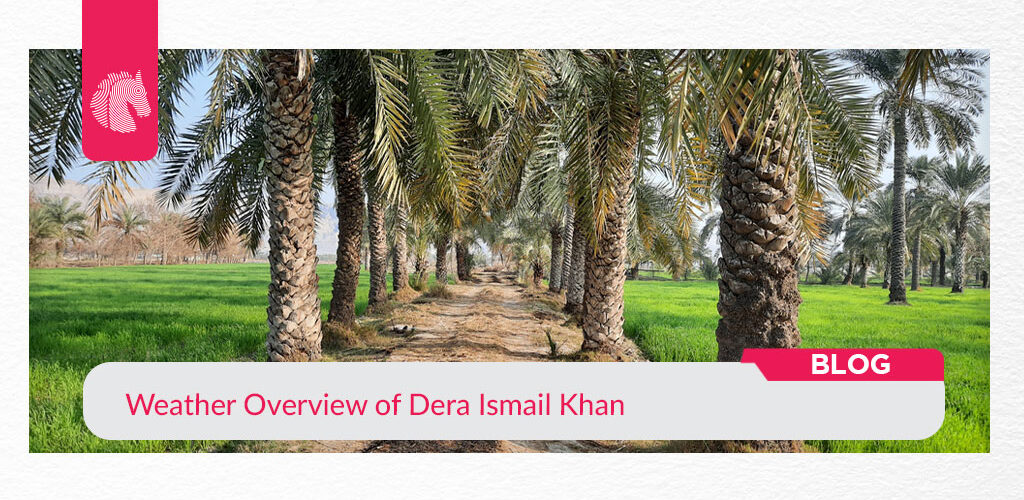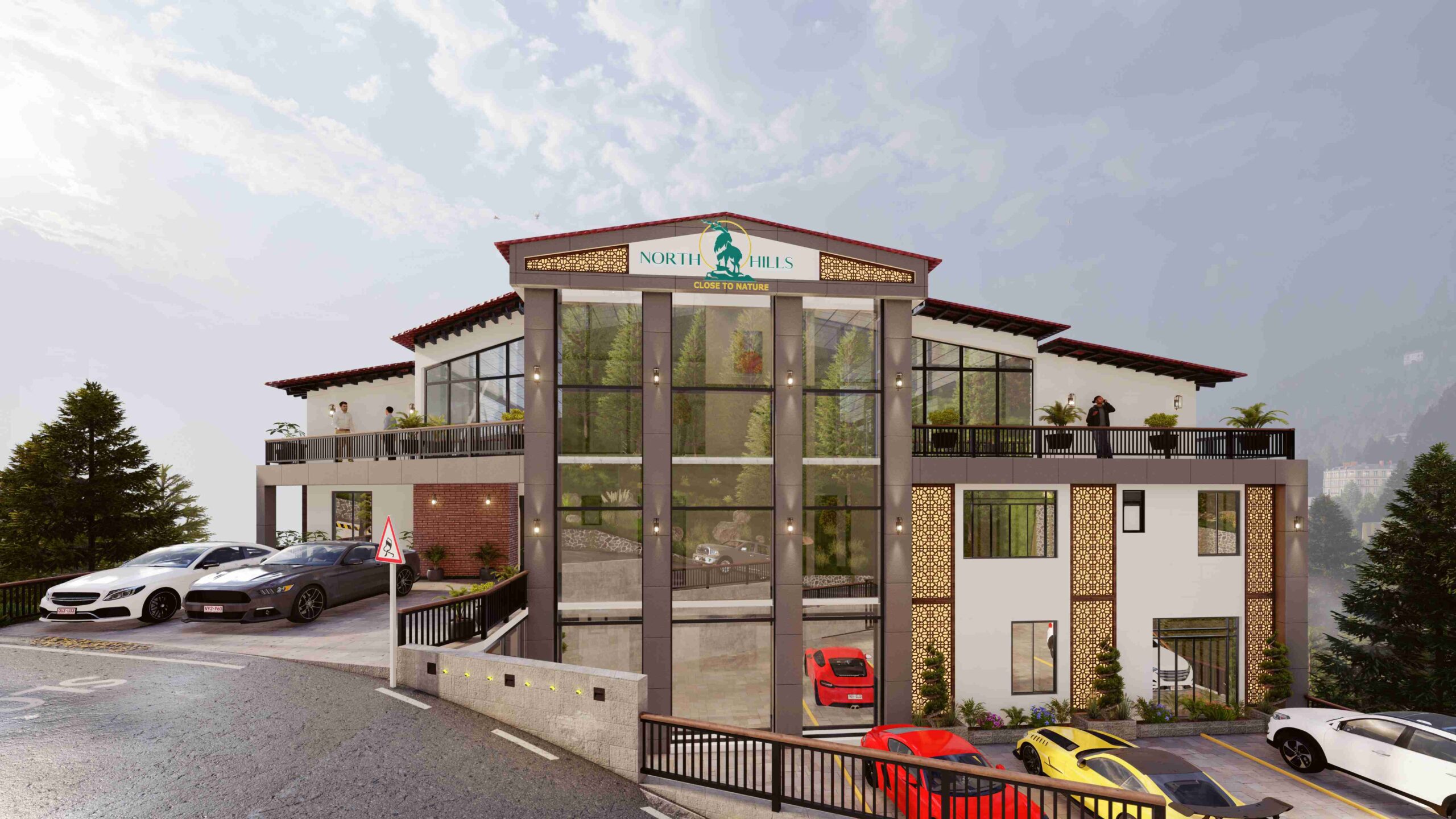Weather Overview of Dera Ismail Khan

Dera Ismail Khan is a historic city in the northern region of Pakistan’s Khyber Pakhtunkhwa province. It is situated on the west bank of the Indus River. This city has a rich cultural heritage dating back centuries and offers a blend of natural beauty and architectural marvels. The city is strategically positioned at a geographically and economically vital location. The weather in this wondrous place exhibits remarkable diversity.
DI Khan’s altitude of 177 meters above sea level gives it a hot desert climate. Sweltering summers often exceed 45°C (113°F), contrasting with dry, mild winters.
Despite its challenging desert climate, This city has a diverse temperature range that supports agriculture and contributes significantly to the country’s economy by cultivating various seasonal crops and fruits.
This blog will give you an overview of the weather in DI Khan City.
The Weather of DI Khan in Different Seasons
Blessed with four distinct seasons, this marvelous city offers a diverse climate experience throughout the year. Let’s start exploring them one by one.
Winter
The winter season starts in December and ends in February, featuring greatly varied weather between day and night. Oranges, Kinnow (a type of citrus fruit), and pomegranates are some of the seasonal fruits of winter. Additionally, Qadeemi sohan halwa is a famous food souvenir of DI Khan.
Weather Overview:
- The weather is dry and very mild during the day.
- Nights are cold, often dropping to freezing or slightly below freezing.
- Occasional rain is due to disturbances in the Mediterranean region.
- Nights and dawns are foggy.
Temperature:
- Maximum temperatures around 8/10 °C (46/50 °F) are recorded during colder periods.
Spring
It starts in March and lasts until May. Mangoes (early varieties), Guavas, and dates (from late spring to summer) are some of the seasonal fruits of this month, as the temperature of this city is ideal for their growth.
Weather Overview:
- The months start to warm gradually, especially with the increasing temperature in the daytime.
- The weather becomes a little mild due to occasional rain showers.
Temperature:
Maximum temperature is around 39° / 24° and minimum temperature is 27° / 14°.
Summer
The summer season starts in June and ends in September. It remains the hottest throughout its period. The summer temperatures are ideal for fruits like mangoes (the primary season, with various popular varieties), melons (such as watermelon and muskmelon), and grapes, to name a few.
However, the summers in DI Khan are quite harsh for residents since the city lacks most of its necessities, including adequate water and power supply. Clean drinking water is a burning issue in the city, and the situation worsens in summer. The increased use of ACs, room coolers, and invertors leads to power breakdowns. With technological advancements, citizens are turning to more sustainable and renewable energy sources such as solar panels.
The power shortage affects not only the citizens but also businesses. Businesses that were once established due to their ideal location for trade are now shutting down. The interrupted power supply has caused huge losses not only to the businesses but also to the KPK, as DI Khan is a significant contributor to the province’s GDP.
Fortunately, with the development of the CPEC route M-14, the potential of Dera Ismail Khan (DI Khan) has increased significantly. This has attracted the attention of investors and real estate developers, prompting urbanization in the area. Several initiatives have been undertaken, including the development of high-end societies and communities. AH City, a project by AH Group, is at the forefront of this urban development. AH City is poised to become a new city in DI Khan, addressing major concerns such as solar grid stations, clean water, and security for the residents. What sets this project apart is its emphasis on a plantation drive, with over 2,200 trees already planted and maintained and more being added. The project’s vision is to provide residents with an eco-friendly environment, offering contemporary and futuristic features for their families.
Weather Overview:
- This season is observed as very hot and primarily dry before the monsoon.
- Due to the monsoon, the temperature becomes humid.
- Sometimes, intense rainfall increases the risk of floods.
Temperature:
- Temperatures frequently exceed 45 °C (113 °F), with peaks reaching 49/50 °C (120/122 °F).
Autumn (October to November)
The duration of the autumn season starts from the beginning of October and ends in November. DI Khan’s autumn season is famous for fruit growth, including Persimmons (locally known as “Amlok”), Apples, and Dates.
Weather Overview:
- The temperature starts to cool down.
- Mild temperature during the day.
- Humidity decreases gradually as winter approaches.
Temperature:
The maximum temperature is 36° / 24° and the minimum temperature is around 27° / 11°.
Ideal Weather Conditions to visit D.I Khan
October to mid-March is considered the perfect time to visit D.I. Khan.
Temperature Pattern
Dera Ismail Khan has a humid subtropical climate with no dry seasons. The yearly temperature is around 18.15ºC (64.67ºF), which is -2.74% lower than Pakistan’s averages.
Rain Patterns
Dera Ismail Khan typically receives about 121.84 millimeters of precipitation and has 134.64 rainy days, about 36.89% annually.
Climate Change Impacts on the City
Due to the recent climate change, the city has been affected by climatic disasters like floods. The massive floods of July and August 2022, which resulted from fluctuations in monsoon patterns, caused unprecedented damage to livestock, agriculture, forests, and wildlife and destroyed infrastructure.
The situation became more destructive due to a lack of awareness; special measures or initiatives needed to be taken seriously, which has badly affected Pakistan’s economy.
Conclusion
Dera Ismail Khan boasts a blend of historical richness and varying weather. Each season offers its allure and conditions, from cold winters to blazing summers. The best time to visit is from October to mid-March when the weather is more relaxed and perfect for exploring the city and enjoying outdoor activities. Whether you’re interested in its ancient history, seasonal fruits, or experiencing its unique climate, this city has much to offer because of its great potential.
Read More Blogs
















